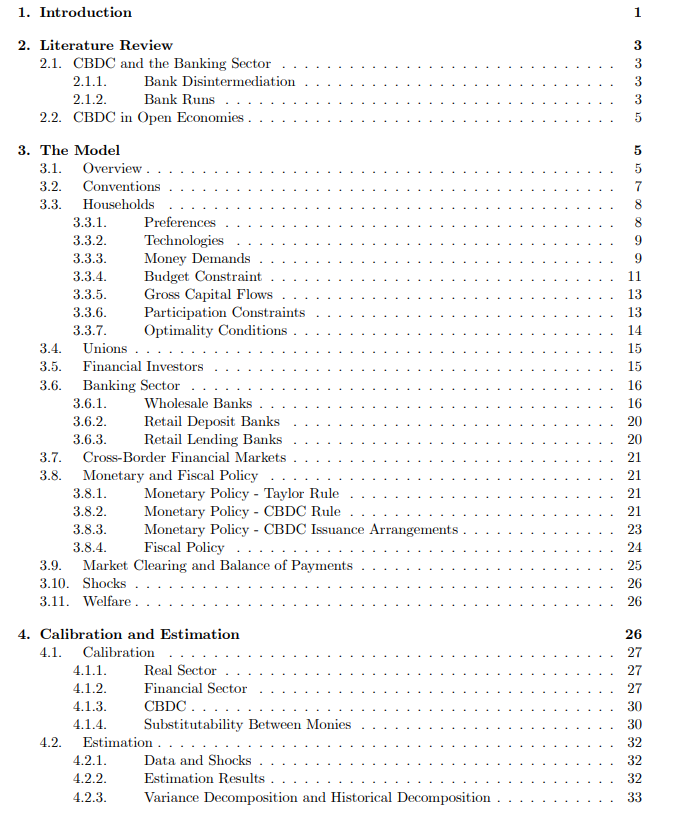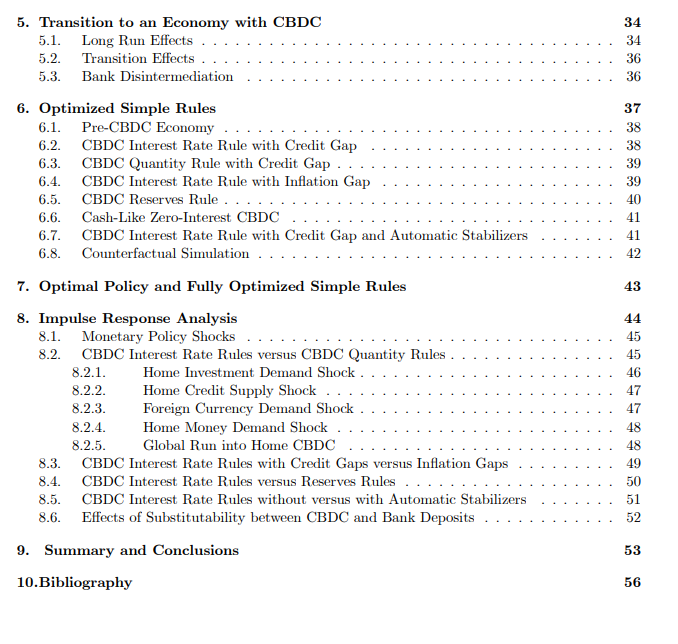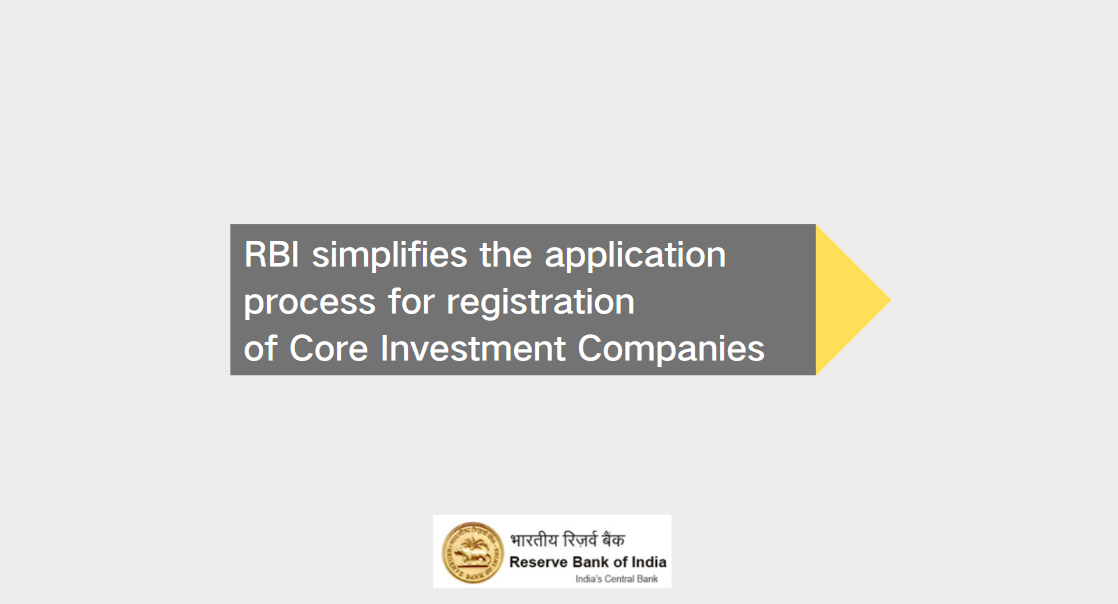CBDC policies in open economies-BIS
Download → CBDC policies in open economies
Abstract
We study the consequences for business cycles and welfare of introducing an interest-bearing retail CBDC, competing with bank deposits as medium of exchange, into an estimated 2-country DSGE environment. According to our estimates, financial shocks account for around half of the variance of aggregate demand and inflation, and for the bulk of the variance of financial variables. CBDC issuance of 30% of GDP increases output and welfare by around 6% and 2%, respectively. An aggressive Taylor rule for the interest rate on reserves achieves welfare gains of 0.57% of steady state consumption, an optimized CBDC interest rate rule that responds to a credit gap achieves additional welfare gains of 0.44%, and further gains of 0.57% if accompanied by automatic fiscal stabilizers. A CBDC quantity rule, a response to an inflation gap, CBDC as generalized retail access to reserves, and especially a cash-like zero-interest CBDC, yield significantly smaller gains. CBDC policies can substantially reduce the volatilities of domestic and cross- border banking flows and of the exchange rate. Optimal policy requires a steady state quantity of CBDC of around 40% of annual GDP.
























































First, please LoginComment After ~